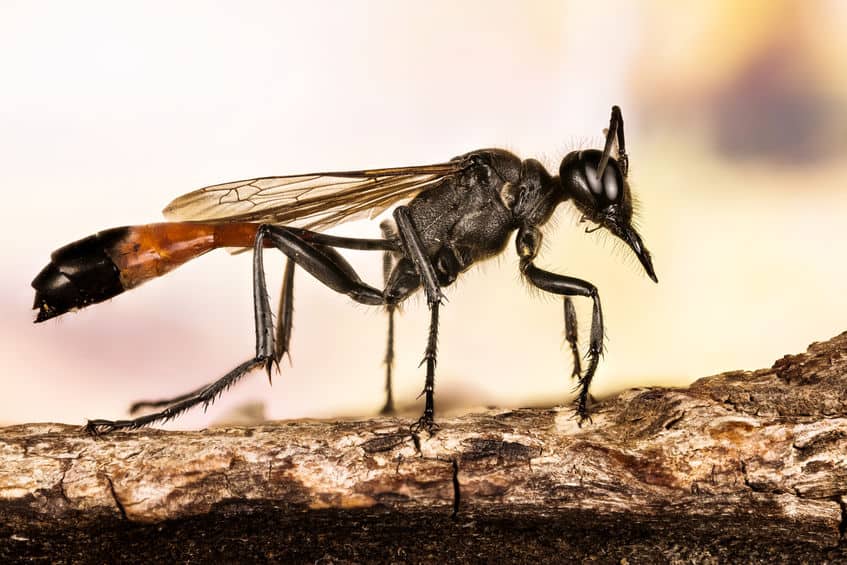The red-banded sand wasp, Ammophila sabulosa, is found in northern Europe.
What do red-banded sand wasps prey on?
They paralyze caterpillars and give them to their offspring to kill. They sting the caterpillar on its belly. They must be careful not to kill the caterpillar as it would start to decay before their larva has time to consume them. Once paralyzed they take them back to their burrows which are dug out of sandy soil. Within the burrow, one egg is laid next to the caterpillars. When hatched the larva will consume the caterpillars.
Do they protect their young?
The females seal their eggs in burrows, never to return. Once her egg is laid in the burrow and it is fully stocked with paralyzed caterpillars the female will seal the entrance with twigs and leaves. She will also camouflage the entrance. Once done she will leave the site forever. Inside the larva will gradually consume the caterpillars and over a period of weeks will develop into a fully formed wasp.
What do red-banded sand wasps look like?
They are distinctive for their long very narrow ‘waist’. The shape of the red-banded sand wasp is quite remarkable due to the pronounced narrow waist that gives them a striking look.

Do red-banded sand wasps compete with each other?
They parasitize other red-banded sand wasps. Digging out a burrow and preying on multiple caterpillars before dragging them back to the nest is labor-intensive. Many red-banded sand wasps find it much easier to find an existing nest and steal the caterpillars, or better yet they remove the larva in the nest and replace it with their own. This explains why females put significant effort into trying to camouflage their nests.
Are red-banded sand wasps solitary?
They are solitary. Like all solitary wasps, they are not part of large colonies and live a solitary existence. They only meet others of their kind for mating, and that is a very brief affair.
Are they active in the cold?
They are far more active on sunny days. These cold-blooded insects love the heat and will be energized on sunny days to hunt for caterpillars. Cold weather slows them down making it difficult for them to hunt. They can not survive very cold weather.
Are red-banded sand wasps strong?
They can move caterpillars up to ten times their own body weight. After paralyzing caterpillars the job is not done. They must move them to their burrows. That is no easy task given the relative size of the pray. Red-banded sand wasps measure about 0.6 inches (16mm) in length but have a small body mass. It is no wonder they only hunt in sunny weather.
Do red-banded sand wasps have good memories?
They have good memories. As more than one caterpillar is needed to feed their offspring until they fully develop they must make several trips back to their nests. After each visit, they must also camouflage the nest to hide it from other insects and other sand wasps. This means that after hunting for each caterpillar they must be able to find their way back to the nest each time, requiring an excellent memory.
Is the sting of the red-banded sand wasp painful?
The sting is not painful to humans. People are very unlikely to ever be stung by a red-banded sand wasp as their solitary existence rarely if ever brings them into contact with people. The sting will inflict only minor pain to humans.
How many nests do females make?
The female will make up to ten nests at a time. Each nest is exclusive to one egg. The female will need to prepare several nests to ensure that some of her offspring fully develop. They are very vulnerable to predators, not least other red-banded sand wasps who actively seek to take over existing nests.
